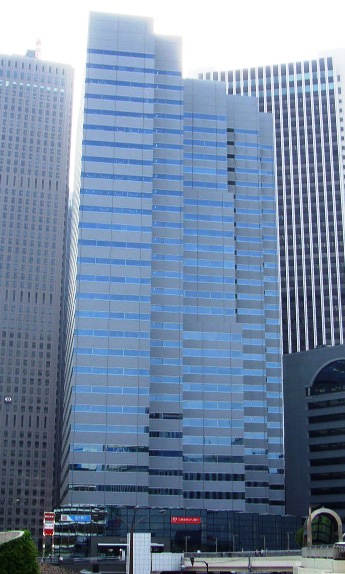TLV to Tokyo Intl.-narita (NRT)
Japan
Tokyo
CityNRT
IATA9222.6 km
Distance11h 27m
Flight TimeCoordinates: 35.7647, 140.386
Airlines:
About Tokyo

Capital and most populous city in Japan
Tokyo, officially the Tokyo Metropolis, is the capital and most populous city in Japan. With a population of over 14 million in the city proper in 2023, it is one of the most populous urban areas in the world. The Greater Tokyo Area, which includes Tokyo and parts of six neighboring prefectures, is the most populous metropolitan area in the world, with 41 million residents as of 2024.
🌐 Read more on WikipediaWeather in Tokyo
Shinjuku Niagara Falls
Shinjuku Niagara Falls is a fountain in Tokyo's Shinjuku Central Park, in Shinjuku, Japan. The Tokyo Weekender has described the water feature as "generously named".
Jōgan-ji (Nakano, Tokyo)
Jōgan-ji (成願寺) is a Buddhist temple located in Honchō, Nakano, Tokyo, Japan. It was a filming location of the 2003 movie Lost in Translation.
Tokyu Kabukicho Tower
Tokyu Kabukicho Tower (東急歌舞伎町タワー, Tōkyū Kabukichō Tawā) is a 48-storey skyscraper located in the Kabukichō district of Shinjuku, Tokyo, Japan. The 225 m (738 ft) tower was designed…
Tokyo Opera City Tower
Tokyo Opera City Tower (東京オペラシティタワー, Tōkyō Opera Shiti Tawā) is a skyscraper located in Shinjuku, Tokyo, Japan. Completed in 1996, it stands 234 metres (768 feet) high and has 54 f…
Sompo Museum of Art
The Sompo Museum of Art (SOMPO美術館, Sonpo bijutsukan) is an art museum in Shinjuku, Tokyo, Japan. It is owned by the Japanese insurance company SOMPO and is located next to the comp…
Godzilla head
The Godzilla head is a landmark and tourist attraction in Kabukichō, Shinjuku, Tokyo, Japan. The sculpture is accessible from the Hotel Gracery Shinjuku's Godzilla Terrace, on the …
Shinjuku I-Land Tower
The Shinjuku I-Land Tower (新宿アイランドタワー) is an office skyscraper located in Shinjuku, Tokyo, Japan. Construction of the 620.08 feet (189.00 m), 44-storey skyscraper construction bega…
Tokyo Metropolitan Government
The Tokyo Metropolitan Government (東京都庁, Tōkyōto-chō) is the government of the Tokyo Metropolis. One of the 47 prefectures of Japan, the government consists of a popularly elected …
Sompo Japan Building
The Sompo Japan Head Office Building (損保ジャパン本社ビル, Sonpo Japan Honsha Biru) is the corporate headquarters for Sompo Japan Insurance. It is located in the district Nishi-Shinjuku in …
Shinjuku L Tower
The Shinjuku L Tower (新宿エルタワー) is a skyscraper located in Shinjuku, Tokyo, Japan. Construction of the 121-metre (397 ft), 31-storey skyscraper was finished in 1989. It was built by…
Mode Gakuen Cocoon Tower
Mode Gakuen Cocoon Tower (モード学園コクーンタワー, Mōdo gakuen kokūn tawā) is a 204-metre-tall (669-foot), 50-story educational facility located in the Nishi-Shinjuku district in Shinjuku, To…
Shinjuku Mitsui Building
The Shinjuku Mitsui Building (新宿三井ビル, Shinjuku Mitsui Biru) is a high-rise building in Nishi-Shinjuku, Shinjuku, Tokyo. It is owned by Mitsui Fudosan. It was the tallest building i…
Robot Restaurant
Robot Restaurant was an entertainment venue operated by Robot Restaurant Co., Ltd. located in Kabukicho, Shinjuku, Tokyo. The restaurant offered dinner with a robot show. Due to th…
Shinjuku Central Park
Shinjuku Central Park or Shinjuku Chūō Park (新宿中央公園, Shinjuku chūō kōen) is a park in western Shinjuku, Tokyo, Japan. The park is bordered by Honnnan Dori and Kita Dori to the nort…
Tokyo Opera City Concert Hall
Tokyo Opera City Concert Hall (東京オペラシティ コンサートホール, Tōkyō Opera Shiti Konsāto Hōru) (TOCCH) is a concert hall that opened in the 54-floor Tokyo Opera City Tower in Shinjuku, Tokyo, J…
Shinjuku Park Tower
The Shinjuku Park Tower (新宿パークタワー, Shinjuku Pāku Tawā) is the second-tallest building in Shinjuku, Tokyo.
Shinjuku Oak Tower
The Shinjuku Oak Tower (新宿オークタワー) is a skyscraper located in Shinjuku, Tokyo, Japan. Construction of the 184-metre, 38-storey skyscraper was finished in 2002.
















